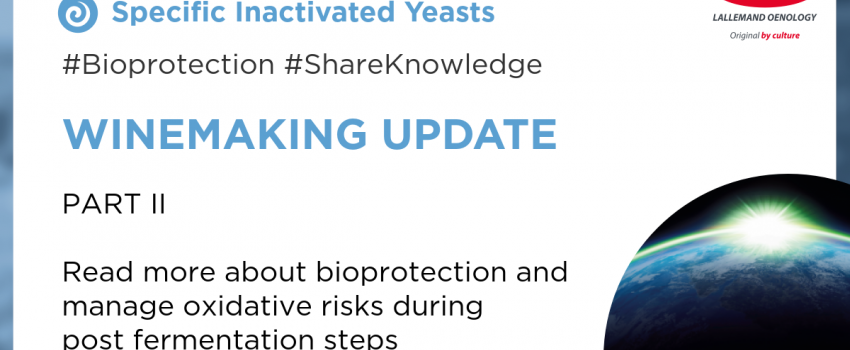
Managing oxidative risk with biological tools – PART II
Publiée le 29/04/2021 16:32We have seen in Part I of Managing oxidative risk with biological tools how to fight oxidation in prefermentation stages with specific inactivated yeasts, such as GLUTASTAR™.
But there are also sensitive stages post fermentation, where wine needs to be protected from oxidation. PURE-LEES LONGEVITY™ is an essential tool to reach this goal.
Once the fermentations are finished, and before bottling, the wine is vulnerable to oxidation contamination, which needs to be controlled via O2 scavenging. SO2 is typically used to prevent oxidation in finished wines and the traditional method of keeping the wine on lees can also be used but there are risks associated with it (contamination, quality of the lees).
Research from the INRAE (J-M. Salmon) showed the potential of specific inactivated yeasts to consume oxygen and protect wine from oxidation. Among the wide range of SIYs studied, one exhibited a very high rate of oxygen consumption able to protect the wine from oxidation during the various steps from post-fermentation processing up to bottling. It is now made available to winemakers: PURE-LEES LONGEVITY™.
To assess the many benefits of PURE-LEES LONGEVITY, winery scale trials were conducted during storage, cold stabilization and transport of white wines.
After cold stabilization, when the temperature increases again, the dissolved oxygen causes oxidation reactions, hence the need to protect the wine. It is thus interesting to trap the oxygen at this early stage with PURE-LEES LONGEVITY as a strategy to protect the wine against oxidation while reducing the use of SO2.
During racking and storage, wines were PURE-LEES LONGEVITY was added at the bottom of the reception tank, presented a higher free SO2 fraction and a brighter color after several months of storage. This demonstrates that PURE-LEES LONGEVITY has a positive impact on wine aroma, color preservation and enables SO2 addition limitations.
It is well known that thiols are very sensitive to oxygen. During bulk wine transport, in a trial involving transport of wine in flexitanks from New Zealand to France, the addition of Pure-Lees™ Longevity during the loading of the flexis with the wine (up to 20 g/hL) made it possible to obtain on arrival a wine whose aromatic qualities were better preserved, with a longer shelf life and also a better market value.
PURE-LEES LONGEVITY is an effective tool to control oxidation post-fermentation and can be part of an overall strategy of bioprotection.
With GLUTASTAR and PURE-LEES LONGEVITY your wine is protected during both pre-fermentation and post-fermentation stages.
For more information, read our Winemaking Update – https://www.lallemandwine.com/wp-content/uploads/2021/04/WUP-Oxidation-Pure-Lees.pdf


